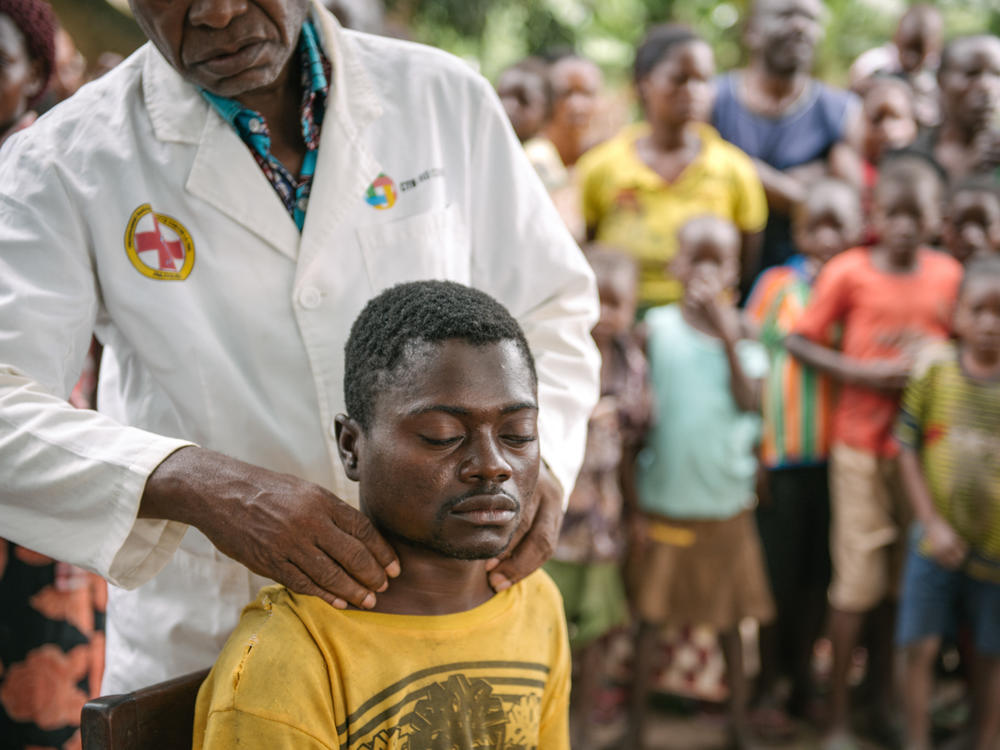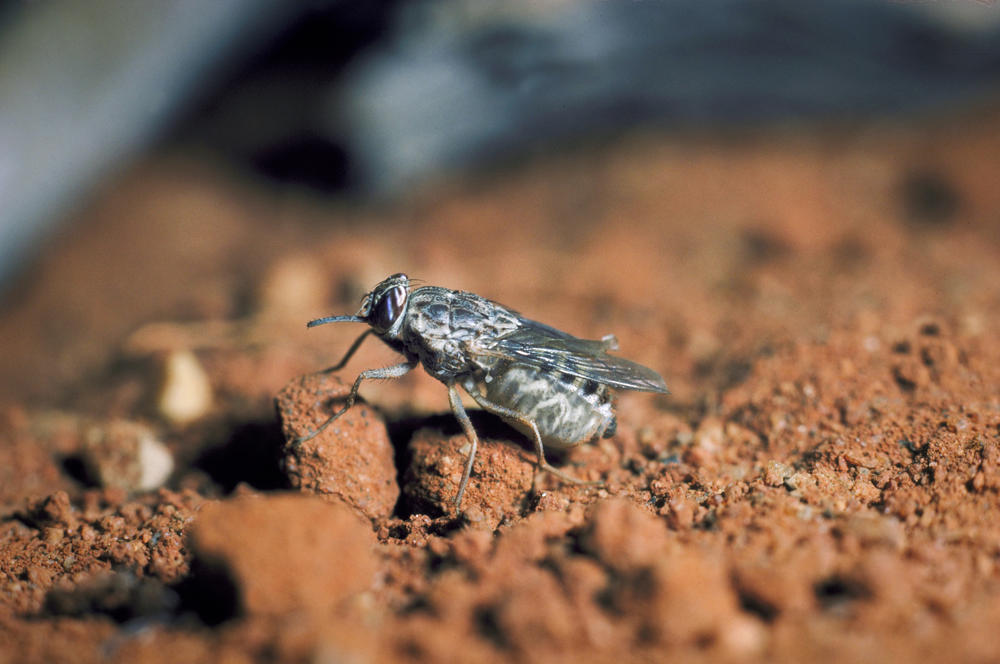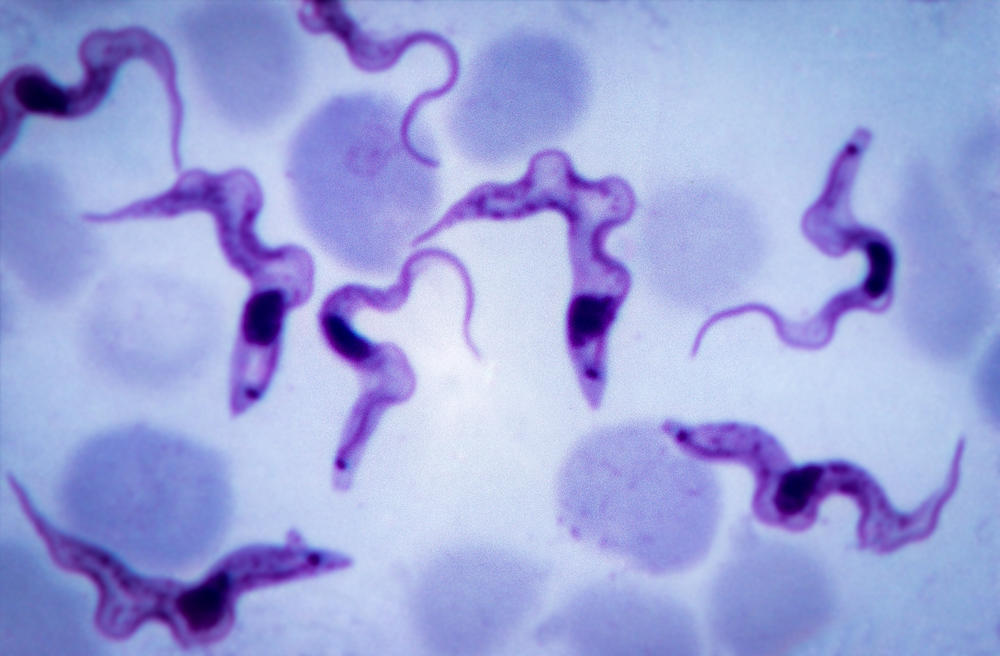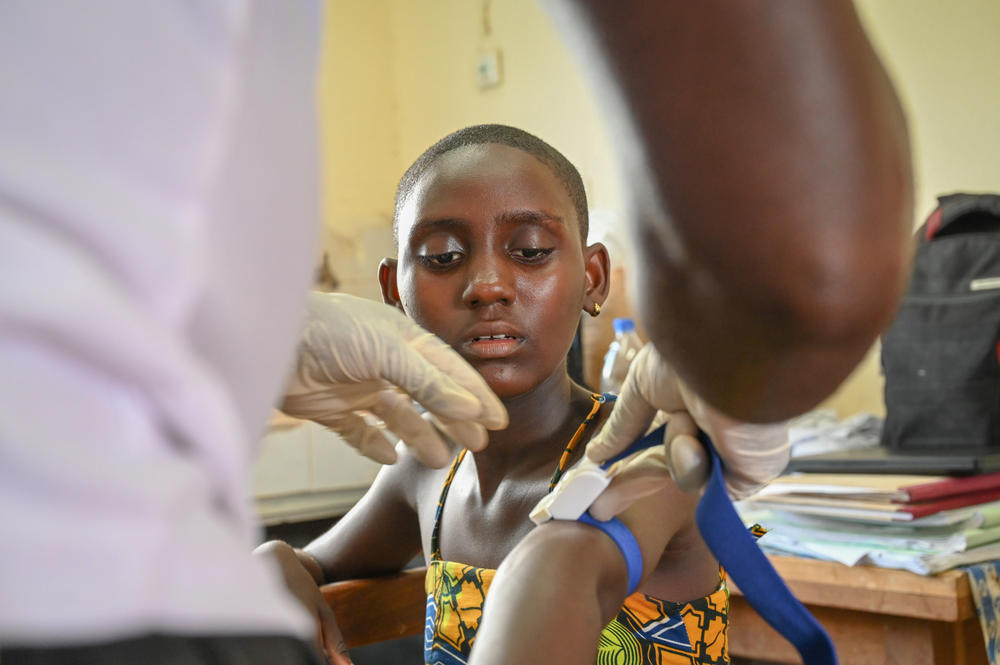Section Branding
Header Content
With one dose, new drug may cure sleeping sickness. Could it also wipe it out?
Primary Content
In 2004, when physician Dr. Wilfried Mutombo began treating patients diagnosed with sleeping sickness, the available treatments were themselves horrific and sometimes deadly.
"The widely available treatment then was an arsenic-based drug, and it was toxic. It could kill up to 5% of patients," he says. "I lost two of my patients. They were young, and that was a very bad experience.
Sleeping sickness is an often fatal disease caused by a parasite where infected people become prone to sleeping all day and night as the disease progresses. It's endemic to 36 countries in Africa, but most cases occur in the Democratic Republic of the Congo.
Now, a new oral drug has emerged that is 95% effective at curing sleeping sickness with just one dose. The results of clinical trials for this new drug, acoziborole, were published in The Lancet Infectious Diseases on Nov. 29.
It has the potential to drastically change the way sleeping sickness is treated and help the World Health Organization (WHO) reach its goal of eliminating sleeping sickness by 2030.
A nightmare parasite
There are two kinds of sleeping sicknesses, both caused by Trypanosoma parasites. The most common form of the disease, and the one treated by this new drug, is caused by Trypanosoma brucei gambiense. Humans are the primary reservoir for the parasite, and it is spread to others by tsetse flies. WHO estimates there were roughly 300,000 cases per year in the late '90s, but the number of cases has now dropped to fewer than 1,000 cases per year.
When people are first infected, their symptoms can look a lot like malaria, but eventually they can develop behavioral issues, paralysis and severe sleep disturbances.
For years, treatments have consisted of painful injections, multiple times a day for weeks on end. And if that wasn't enough, patients had to get a lumbar puncture to detect the parasite and assess the efficacy of treatment.
"People were fearing to be diagnosed with sleeping sickness because of the lumbar puncture and because of the [intensive nature] of the treatment," says Mutombo. Even with treatment, Mutombo says that relapse was possible in 30 to 50% of patients, leading to more lumbar punctures and injections – or if treatments continued to be unsuccessful, death.
Over time, treatments became less toxic and more effective, but even the last drug for sleeping sickness approved for use in 2019 still required lumbar punctures and 10 days of treatment.
The new drug described in the just-released paper prevents the parasite from making its cellular machinery, causing it to die after a single oral dose. After 18 months, the drug was able to cure 198 out of 201 patients who made it through the trial.
For the three patients who were not cured, Dr. Antoine Tarral, one of the scientists who helped develop the new drug, says "we are not sure if that is really a relapse or a reinfection."
Mutombo and Tarral both work for the Drugs for Neglected Diseases Initiative (DNDi) and were authors on the paper describing the results of the clinical trial.
The single oral dose of a highly effective drug means that treatment is going to be far more accessible to vulnerable populations. "What is extraordinary with this drug is that it can be given not only in the hospitals but also directly in the villages," says Dr. Jacques Pépin, a retired professor at the University of Sherbrooke, Québec who has spent years researching sleeping sickness.
Despite his enthusiasm that acoziborole is truly a major development in treating sleeping sickness, Pépin has some critiques of the clinical trial. "The trial was not according to the current standards, because it was not a randomized control trial where half of the patients received the new treatment and half of the patients [received] the previously recommended treatment," he says.
He also points out that the number of patients treated in the trial was relatively low – around 200 – but also that "it was not necessary to do better" because there are so few cases of sleeping sickness. Regardless, Pépin is still confident the drug has great potential.
Is eradication by 2030 possible?
Even though the clinical trial was highly successful, the drug likely won't be available for another year or two as it goes through the drug registration and approval process, according to Mutombo. That leaves only a few years for the WHO to reach its goal of eliminating sleeping sickness by 2030.
"That's going to be tough," Pépin says about the elimination deadline. "When you're trying to eradicate a disease, it's always the last few miles that are difficult. It's very hard to reach the magical number of zero cases."
Pépin gave three reasons why he believes elimination of sleeping sickness will be difficult. The first is that the disease is found in countries that are or could become politically unstable, making the logistics of testing and treatment more difficult. The second is that once the disease becomes uncommon, it will become harder to convince people to take part in surveillance efforts. Finally, sleeping sickness can infect domesticated animals, potentially providing another reservoir for the parasite. If a tsetse fly bites an infected animal, it could pass the disease back to people.
Production of the drug could also be an issue. "Normally the drug is free of charge for the patient and the production of the drug is not so costly," Tarral says. "We don't need to produce tons of materials because we can treat the patient with less than one gram of substance. So the difficulty is to [find] an organization or factory that has accepted to produce a low number of formulations."
Despite those complications, Mutombo has hope for the new drug. "I think elimination is within reach because we have this tool," he says.
Tarral, on the other hand, is a bit more restrained in his projections. "I don't think we could eradicate it, but we could decrease the number of patients and simplify the treatment," he says.
Copyright 2022 NPR. To see more, visit https://www.npr.org.




